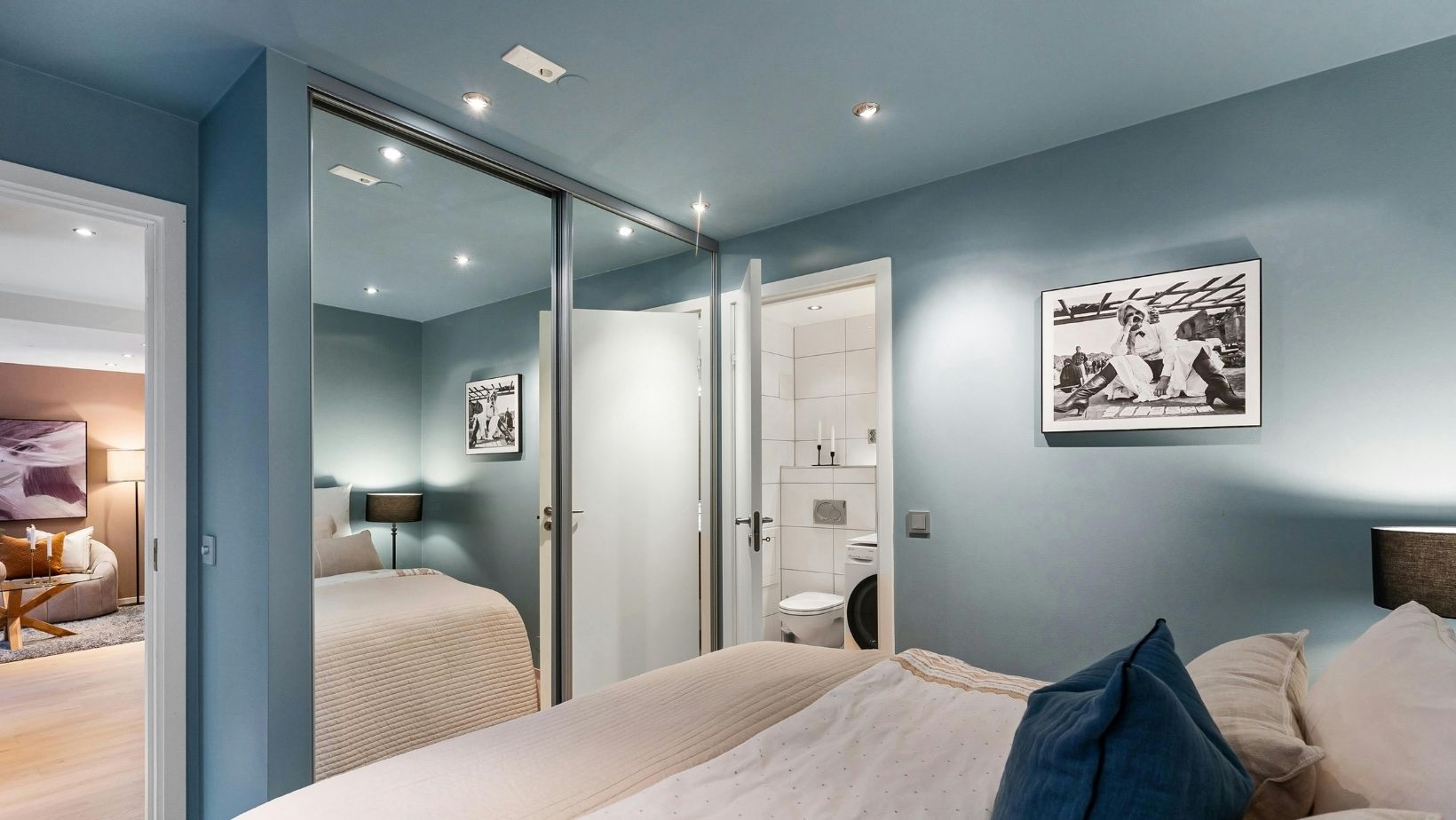Table of Contents
ToggleIn the quest for a restorative night’s sleep, we often focus on mattresses, pillows, and thread counts. While these are crucial, the very foundation of your sleep sanctuary is the bed frame. Choosing the right size is more than just a matter of aesthetics; it’s a critical decision that impacts your comfort, the functionality of your bedroom, and even your overall well-being.
An incorrectly sized bed frame can make a room feel cramped, limit your movement, and ultimately compromise the quality of your rest. This guide will walk you through the standard bed frame sizes, explore the key factors you must consider, and provide a simple checklist to ensure you select the perfect foundation for countless nights of peaceful sleep.
Understanding the Standard Bed Frame Sizes
Navigating the world of bed frames begins with a clear understanding of the standard dimensions available. Each size is designed with specific users and room dimensions in mind.
Twin (38″ x 75″)
The compact Twin is the smallest of the standard sizes, making it an excellent choice for children’s rooms, single adults living in tight quarters like studio apartments, or for use in bunk beds and daybeds. Its smaller footprint allows for more floor space for play and other furniture.
- Ideal for: Children, single adults in small spaces, bunk beds, daybeds.
- Minimum Room Size: Approximately 7 ft x 10 ft.
Twin XL (38″ x 80″)
The Twin XL (Extra Long) offers the same width as a standard Twin but adds five crucial inches to its length. This makes it the go-to option for taller teenagers and single adults who need more legroom. It’s the standard size found in most college dormitories for this very reason.
- Ideal for: Taller teenagers and single adults, college dorm rooms.
- Minimum Room Size: Approximately 7 ft x 10.5 ft.
Full / Double (54″ x 75″)
Once the standard for couples, the Full or Double bed is now more commonly used by single adults who desire more room to stretch out than a Twin can offer. While it can accommodate two adults, it provides each person with only 27 inches of personal space—the same width as a crib. It’s a great option for guest rooms or for couples who prefer to sleep in close quarters.
- Ideal for: Single adults who want more room, guest rooms, couples who don’t mind close quarters.
- Minimum Room Size: Approximately 10 ft x 10 ft.
Queen (60″ x 80″)
By far the most popular mattress size in North America, the Queen bed offers a comfortable amount of space for both couples and single sleepers. It provides each person in a couple with 30 inches of width and offers plenty of length for most adults. Its versatile size makes it a perfect fit for most master bedrooms without overwhelming the space.
- Ideal for: The majority of couples, single adults who value ample space.
- Minimum Room Size: Approximately 10 ft x 11 ft.
King (76″ x 80″)
A standard King, sometimes called an Eastern King, is the widest of the standard bed sizes. It offers a luxurious amount of sleeping space, equivalent to two Twin XL beds pushed together. This makes it the ultimate choice for couples who want maximum personal room or for families whose children or pets frequently join them in bed.
- Ideal for: Couples who want maximum personal space, families who co-sleep.
- Minimum Room Size: Approximately 12 ft x 12 ft.
California King (72″ x 84″)
Contrary to popular belief, the California King is not wider than a standard King—it’s actually four inches narrower. However, it adds four inches in length, making it the longest standard bed frame available. This makes it the ideal choice for very tall individuals or couples who need the extra legroom and don’t mind sacrificing a bit of width.
- Ideal for: Taller individuals and couples who need extra length.
- Minimum Room Size: Approximately 12 ft x 12.5 ft.
| Size | Dimensions | Ideal For | Min. Room Size |
| Twin | 38″ x 75″ | Children, Small Singles | 7′ x 10′ |
| Twin XL | 38″ x 80″ | Tall Singles, Dorms | 7′ x 10.5′ |
| Full | 54″ x 75″ | Sprawling Singles, Guests | 10′ x 10′ |
| Queen | 60″ x 80″ | Most Couples, Master Bedrooms | 10′ x 11′ |
| King | 76″ x 80″ | Couples Wanting Max Space | 12′ x 12′ |
| Cal King | 72″ x 84″ | Tall Couples | 12′ x 12.5′ |
The 5 Key Factors to Consider Before You Buy
With the dimensions in mind, it’s time to personalize your choice. Consider these five factors to narrow down the perfect fit.
1. Room Dimensions & Layout
This is the most critical logistical factor. A bed that is too large will dominate a room, restricting movement and creating a sense of clutter. Before you fall in love with a King frame, grab a tape measure. A widely accepted interior design principle is to leave at least 24 to 30 inches of walkable space around the sides and foot of the bed. This ensures you can move comfortably, make the bed without difficulty, and open dresser drawers or closet doors. Remember to account for the placement of all your furniture and architectural features like radiators, windows, and the swing of the bedroom door.
2. Sleeper(s) Size & Habits
Your personal comfort is paramount. Consider your height and preferred sleeping position. If you are over six feet tall, a Queen, King, or California King will provide the necessary length to prevent your feet from hanging off the edge. Think about your sleeping style. Do you curl up in a ball, or do you sprawl out like a starfish? If you share the bed, have an honest conversation with your partner about their habits as well. A restless sleeper paired with a light sleeper will likely need the extra space a King provides to minimize disturbances.
3. Lifestyle & Future Plans
A bed frame is a long-term investment, so think about where you’ll be in the next five to ten years. Are you single now but in a serious relationship? It might be wise to size up from a Full to a Queen. Are you planning on starting a family, or do you have pets that love to cuddle? The weekend morning snuggles are much more comfortable in a spacious King bed.

The bed’s primary use also matters; a guest room that is only used occasionally can comfortably house a Full or Queen, reserving the larger sizes for the master bedroom. If you’re undertaking a full bedroom redesign, [suspicious link removed] can help you track all these moving parts, from picking a frame size to choosing new paint colors.
4. The Total Budget
Your budget should extend beyond the price tag of the frame itself. A larger frame necessitates a larger—and more expensive—mattress. Furthermore, the cost of bedding scales with size. King-sized sheet sets, duvets, and comforters are significantly more expensive than their Queen-sized counterparts. Factoring in the total cost of the complete bed setup from the start will prevent any surprising expenses down the line.
5. Logistics & Moving
This is the final, and often overlooked, hurdle. You’ve found the perfect Cal King frame, but can you get it into your bedroom? Measure the width and height of all entry points, including doorways, stairwells, and tight corners in your hallways. A large, one-piece headboard or a solid box spring might not be able to make the turn into your room. Taking these measurements beforehand can save you from the logistical nightmare and potential return fees of a failed delivery attempt.
A Simple Checklist for Making Your Decision
Feeling ready? Run through this quick checklist to confirm your choice.
- Step 1: Measure your bedroom. Note its length and width, and sketch a rough layout including furniture.
- Step 2: Evaluate your personal space needs. Consider your height, sleeping style, and desire to sprawl.
- Step 3: Consider who will be sleeping in the bed. Account for partners, kids, pets, and future plans.
- Step 4: Set a realistic total budget. Include the frame, mattress, and all necessary bedding.
- Step 5: Measure your hallways and doorways. Ensure your chosen size can be delivered to the room.
- Step 6: Choose your ideal size with confidence. You’ve done the research!
Conclusion
Choosing the right bed frame size is a foundational decision that sets the stage for your overall sleep quality and the harmony of your bedroom. It’s a careful balance between the physical space you have, the personal space you need, your lifestyle, and your budget. By taking the time to measure your room, consider your habits, and plan for the future, you can move beyond simply buying a piece of furniture and truly invest in your rest. After all, a day well-lived begins with a night well-slept, and it all starts with the perfect frame.







